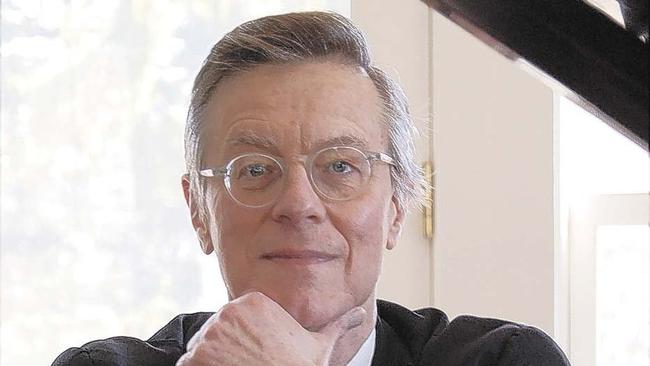Serkin bridges five centuries of keyboard music with probing recital at 92Y

Peter Serkin performed a recital Saturday night at 92Y.
Last month pianist Jeremy Denk played a recital at Alice Tully Hall where he surveyed 600 years of classical music in 80 minutes. Filled with both wonderful playing and confused didacticism, the result was an attractive but insoluble puzzle.
Saturday night at 92Y, pianist Peter Serkin played his own recital, one that took about an hour and 45 minutes (including intermission), to cover close to 500 years of music. But Serkin’s intellectual goals were far narrower and more coherent, and the results much more successful than Denk’s. And if Serkin’s playing wasn’t as combustible, his playing was filled with passion and beauty.
This was a recital with an argument, one that Serkin borrowed from the 20th-century musician and musicologist René Leibovitz. Leibovitz stated, as John Henken wrote in the program notes, that “each stage of musical language had a signature form that embodied the essence of the language at that time.”
Well, yes—like scientific studies that confirm commonplace experience, Leibovitz’s theoretical claim had the advantage of both 20–20 hindsight and confirmation bias. The musical eras we know as the Renaissance, the baroque, the classical, etc., exist because of the compositional language that defines each, and the forms that were themselves integral to both creating and expressing that language.
Serkin played more than a dozen pieces from as many composers that demonstrated that truth. The program, from Josquin to Oliver Knussen, was a conversation back and forth between Western musical epochs through the languages and forms of modes, harmonies, counterpoint, fugue, fantasy, and variations.
The time frame opened with Joaquin’s Ave Christe as arranged in 1988 by Charles Wuorinen. The great master of polyphony, Joaquin’s music is best heard through the voice, where the beauty and complexity of his 16th century modes sounds most clearly. Wuorinen’s arrangement effectively transfers the music to the equal tempered keyboard, and if the glow of the original was lost, the selection was a sensible introduction.
Serkin followed with pieces from Sweelinck, an early codifier of fugal practice, and the mysterious and intriguing John Bull. Meant for the keyboard, this music opened up Serkin’s playing. Bull’s virtuosic keyboard music is almost never heard in concert, but it is exciting and inventive—Serkin played his Ut, Re, Mi, Fa, Sol, La and miniature A Gigge with wit and energy.
Then came a surprising choice, For Away by Toru Takemitsu. This is typical Takemitsu impressionism, neither fully tonal nor specifically formed. It didn’t illuminate the concept, but it was a chance to enjoy Serkin playing a composer he has long championed.
What followed, and concluded the first half, were excellent sets of variations from Knussen and Webern, Variations Op. 24, and Variations for Piano Op. 27, respectively. Knussen’s and Webern’s variations sounded just a close step away from the Renaissance music. In part this was due to the basics of variations coursing through classical music for hundreds of years, and in part to how well Serkin articulated the forms.
The intelligent order for the second half was William Byrd’s keyboard arrangement of John Dowland’s famous Pavana Lachrymae, Byrd’s miniature La Volta, three pieces from Max Reger’s Aus Meinem Tagebuch, Form IV: Broken Sequences by Stefan Wolpe, and Schoenberg’s Suite Op. 25.
Alternating between eras, and with the lingering memories of the first half, collapsed the temporal distance between all these works. Rather than a tenuous, sequential rope bridge from the past, with too many missing slats for stability, the concert was a discussion among contemporaries about the means of formal development. All were so convivially related that the differences between tonality and atonality were inconsequential.
Serkin was responsible for this, and his playing was full of attentive energy. The dance feeling in all the music, from Dowland’s slow step to the real bounciness in Schoenberg’s Suite, was clear to the ear and palpable in the body. That last piece, and the fascinating complexity of Wolpe’s music, were scintillating, and carried the concert to a rising point at the end.
In an encore, the last word was Bach’s, a freely interpreted Aria from the Goldberg Variations that both closed the circle and opened a door to endless variations.
Yefim Bronfman and colleagues play music of Tchaikovsky 3 p.m. January 29 at 92Y. 92y.org


